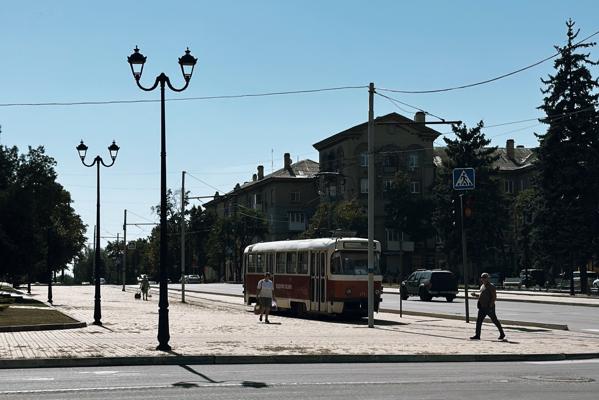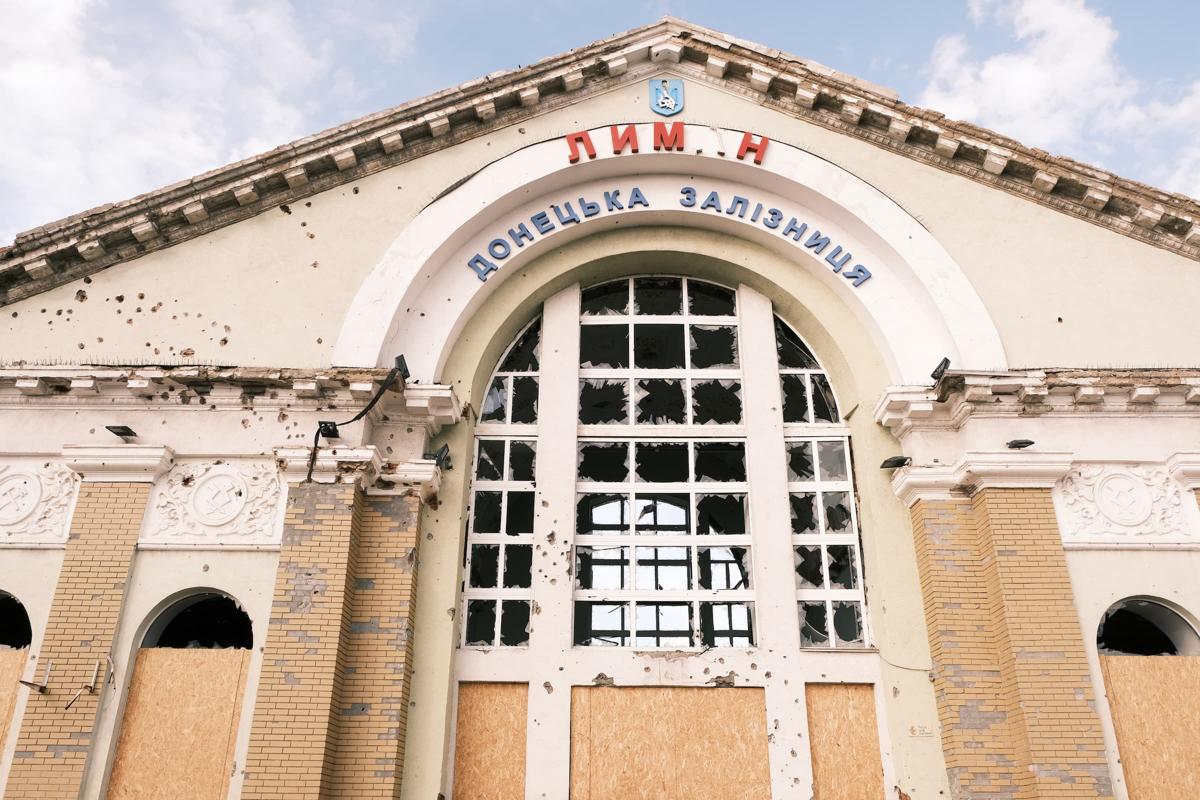
Druzhkivka. The City of Destroyed Memories
Due to the approaching front line and constant shelling, a mandatory evacuation of families with children has already been announced in Druzhkivka. The city is emptying, but life continues here
Read moreThe frontline city of Lyman, located in the north of the Donetsk region, came under Russian occupation on May 23, 2022. The Ukrainian army liberated the city on October 1, 2022. Since then, Russian troops have been regularly shelling it. All schools, the railway station, and the cultural center have been destroyed. Residential areas, including the private sector, are damaged and almost empty. Due to constant shelling, there are very few civilians left in the city. There is no talk of reconstruction here yet. The devastation is growing exponentially. The enemy is so close to the city that on warm spring evenings, you can feel its breath.




High-rise buildings in the orange sun try to hide holes in the walls. Through them, you can see home items that the people didn't have time to take with them.



There's only one wall left of the house. And it plays sunbeams when the light passes through the broken windows.

The other houses are just black. A giant lumps of coal.


Despite the desolation, at 10 am, municipal workers sweep the sidewalks, stacking piles of leaves in a single row, between the craters from the hits. Several shops and pharmacies operate in the center. You can even find fresh flowers on the counters.

The Palace of Culture (The Railway Workers' Science and Technology Building) burned down as a result of Russian shelling of Lyman on April 30, 2022, a month before the occupation. The assembly hall is drowned in rusty fittings. Birds nest in the windows. In some places, wildflowers even grow.





The floor of the library on the second floor is covered with several layers of soot-stained books. Most of the literature is in Russian. Some copies have remained on the shelves. When the wind blows into the room, you can hear nothing but the rustling of the pages. It's as if an invisible librarian is checking the condition of the books.




Swallows fly through the corridors. The wardrobe is littered with children's clothes. The stairs are strewn with theatrical costumes. The House of Culture is eloquently silent.





After the Russian occupation, only the frame of the Lymanska Gymnasium remained, and inside, next to the burnt area, there are fragments of children's drawings on the walls.


The stairs lead to emptiness—the second and third floors of the school are no longer there. Through the broken windows, a large part of the private sector is now visible.


Lyceum No. 3 was damaged in the fall of 2022 as a result of Russian shelling. The facade remained almost intact. The consequences of the destruction are visible only from the inside. The wardrobe and lobby are black with soot. All the walls are black. The mural miraculously survived the fire.



The principal's office is rubbled with ceiling. But the school corners are still in their places. Certificates and torn Teacher's Day greetings are scattered between the tables. On the second floor, a flowerpot stands alone in the middle of the corridor.





In the dining room, the inscription "Bon Appétit" has partially collapsed and faded. The kitchen equipment has completely burned out. The sound of footsteps seems to carry like a wave throughout the entire district, which is as empty as the school.



The gym now has holes in the ceiling. It looks as if it was painted the day before the bombing. Among the sports equipment, there is a cut soccer ball in the goal.


The sun is inviting us to take a walk through the school corridors. If only we didn't have to walk around the broken glass everywhere...

The city's private sector is blooming with lilacs. In some places, vegetation emerges from under the destroyed roofs of houses. A man is plastering the fence of a church that was damaged by shell fragments. There are isolated cafes by the road—even in the almost destroyed Lyman, you can buy a hamburger, shawarma, and non-alcoholic beer.



Spring warms your shoulders in a black jeans jacket with its warmth, but inside, everything gets colder every time you see similar destroyed buildings. This routine of destruction and constant shelling makes something freeze inside. When the unacceptable becomes everyday—with each following morning, it's as if you lose a piece of humanity.

Due to the approaching front line and constant shelling, a mandatory evacuation of families with children has already been announced in Druzhkivka. The city is emptying, but life continues here
Read more
In autumn, the East still holds on to its warmth so intensely, so you can wear a T-shirt. Trams move slowly down the deserted streets. The wind rustles through empty window frames
Read more
A 100-year-old resident of Druzhkivka—about the beginning of World War II, the Russian shelling during a full-scale war, and the rebuilding of her house
Read more
A resident of Druzhkivka in the Donetsk region—about life after the Russian shelling
Read more
A craftswoman from the village of Yarova in the Donetsk region—about the consequences of Russian shelling and occupation
Read more
How a family from Novoselivka in the Donetsk region is rebuilding their lives after the de-occupation of the village
Read more